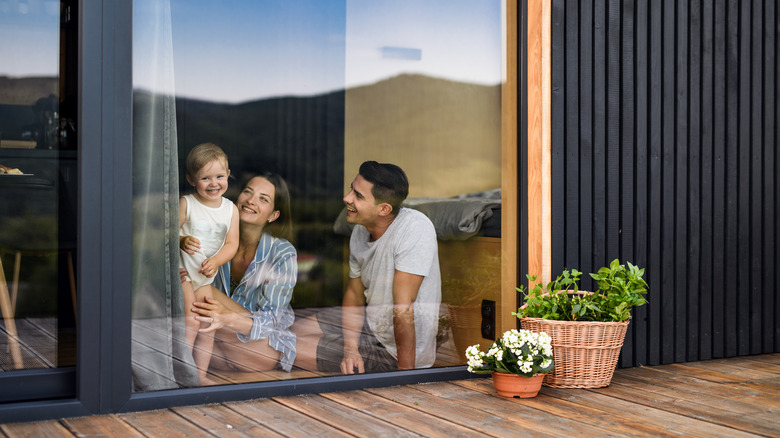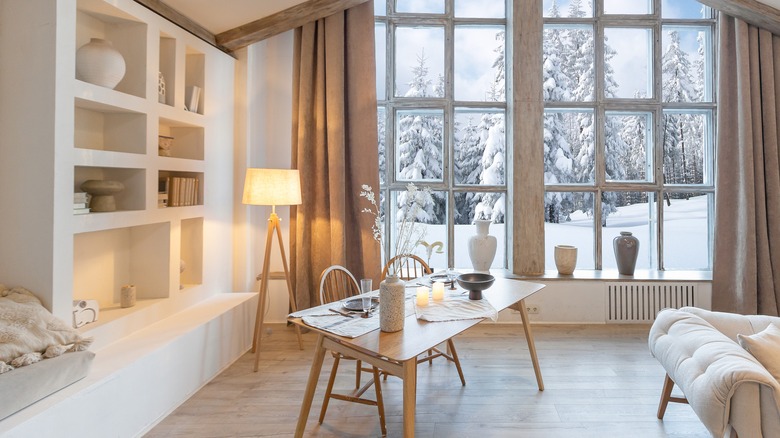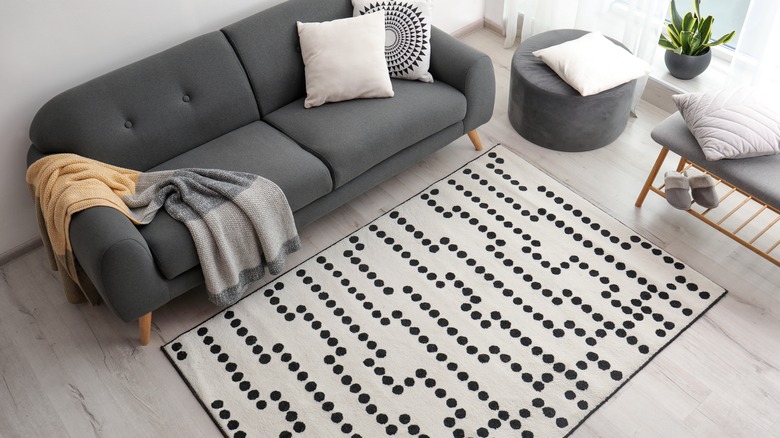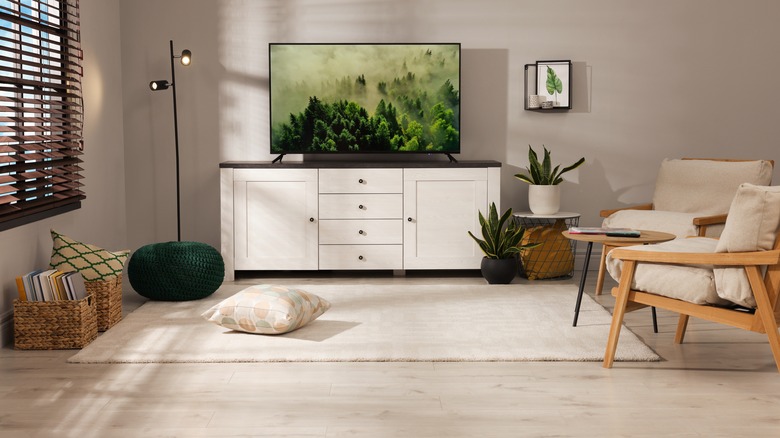The Best Ways To Design Your Interior To Enhance Your Well-Being, According To An Expert
Health and happiness often go hand in hand. A living space filled with positivity and enjoyment can promote well-rounded mental health and well-being. There are numerous approaches to promoting impactful interior design in your home, and stylists are constantly seeking ways to help themselves and their clients achieve the best in wellness at all times. In fact, many popular interior design styles rely on intimate knowledge of psychology and the human condition to establish a positive interior. However, getting the balance right can be a tall order for those new to the art.
In an exclusive interview with House Digest, Julio Arco, an architect and designer with over 10 years of experience in the industry, and the founder of Bark & Chase, discusses some of the perennial winners when it comes to developing a focused and comforting indoor environment. "By considering factors such as lightness, cultural and personal preferences, and the purpose of the space," Arco offers, "we can create interiors that are both aesthetically pleasing and conducive to health and happiness."
Bring in the right colors
A space's competing hues are one of the things people will first notice upon stepping into a room. When promoting new energy and a sense of well-being in your home, it's essential to pay attention to these prominent visual features. "Color plays a crucial role in interior design, as it has the power to bring life to a space, transform it, and impact our emotions," Arco asserts. "The right color palette can create an atmosphere that uplifts and promotes well-being, while the wrong one can have a negative impact."
"Research has found that blue and green are the most preferred interior colors, while warm colors evoke strong emotions, and cool colors are ideal for promoting sleep," Arco adds. Using the color wheel to develop a complementary (or contrasting) set of tones for primary and accent shades can round out your approach to providing an appealing mood for your environment. For instance, blues and purples offer a complementary match, while yellow and purple appear opposite one another and can make for a dramatic pairing.
Create harmony with textures
Divergent tactile additions make for a mentally enriching environment, as well. So don't be afraid to incorporate colorful throw rugs and plush knits in rooms where you spend most of your time. "Textures have the magical ability to transform a plain and boring interior into a visually and emotionally stimulating one," notes Arco. "You can create a harmonious and dynamic environment that engages all of the senses by carefully selecting different textures for walls, floors, furniture, and fabrics."
Mixing and matching tactile features can give your home a fresh atmosphere and provide you with a variety of subtle decorative changes that support whatever comfort requirements you might be craving at any given time. However, when implementing texture into a design, variety is key. "The interaction of different textures can add depth, dimension, and interest to a space while also influencing the mood and atmosphere," Arco adds. "Natural textures such as wood, stone, and tile add warmth and a sense of connection to nature. Synthetic textures, on the other hand, such as carpet and fabric, provide comfort and a sense of coziness."
Add interest and movement with patterns
Decorating isn't just about adding appealing shapes and colors. The unique patterns that your favorite pieces display can make a profound difference in terms of a room's appeal. "Introducing patterns into your home can bring in energy and excitement. The way patterns interact with light, color, and texture can create a dynamic and visually-appealing environment. Adding patterns via wallpapers, curtains, rugs, or furniture can completely transform a room and give it a new life," Arco notes.
Of course, it's important to think carefully when implementing patterns into a room. While a polka-dotted throw pillow is unlikely to throw a space into disarray, some choices can have a profound impact on surrounding areas. "Did you know that the density of patterns plays a significant role in how a room is perceived? A well-designed pattern can make a space appear larger or smaller, affecting our mood and behavior. Plus, using natural patterns like those found in nature can be perceived as more relaxing," Arco offers.
Use the right kind of light
Light forms the basis for much of what we do as people. Indoors, natural lighting can flood a room during the day to enhance the space, but careful lamp positioning is crucial for nighttime comfort. "Our mood, energy level, and overall health are all profoundly influenced by the amount of artificial and natural light we are exposed to on a daily basis," Arco advises. "You can take advantage of the sunlight by positioning the curtains to let in all the light or by ditching them completely. Blinds are a great alternative for privacy without blocking the sun."
When it comes to lamps, overhead lighting, and other electric additions, Arco suggests a simple, yet important feature. "Adjust the brightness to your liking with convenient dimmers or preset settings," Arco notes. "You can set the mood for the evening with warm, cozy lighting and switch to cool, energizing lighting during the day. Create unique spaces with pools of light and make socializing even cozier with tabletop lamps."
Use furniture to complete your interior design
Furniture is a must in any home in terms of both function and aesthetics. But having too much furniture that simply makes a statement can be incredibly detrimental to your home's interior design. "The wrong furniture can make a space feel cluttered and uninviting, while the right pieces can bring the space together and promote well-being," Arco says. "Furniture that just takes up space isn't the right fit. Instead, think of furniture that serves its purpose in a room, like chairs in the living room that are the perfect size and positioned in a way that promotes good conversations."
Your furniture supports the interactions you hope to have inside the property, so choosing carefully can drastically improve your experience. When selecting and styling furniture, it's essential to keep in mind a piece's stylistic and practical purpose since this is likely to subtly change the character of a room. "Matching the scale of the furniture to the room is key — and don't forget about the impact of color, materials, textures, and patterns on the atmosphere. Variety is the spice of life, so chairs should come in different configurations for different social interactions, like a side-by-side, face-to-face, or right angle," Arco notes.





